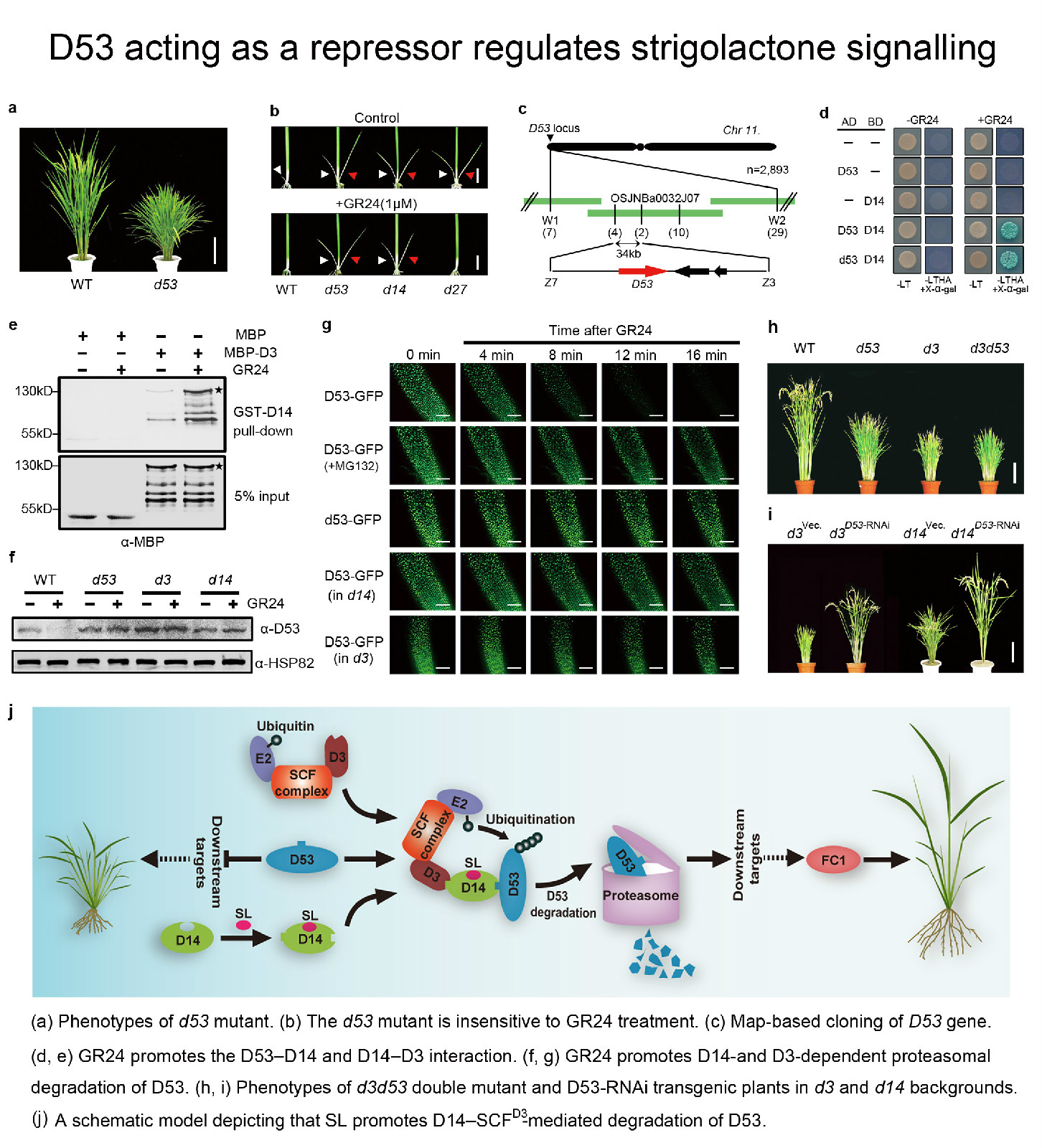D53 acting as a repressor regulates strigolactone signalling in rice
Date:2014-07-31Author:AdminSource:ICS
Recently, Dr. Wan Jianmin’s lab atInstitute of Crop Sciences(ICS) of CAAS has made a major progress on the research of strigolactone signaling pathway. A novel protein DWARF 53 which acts a “switch” to control the strigolactone signaling pathway in regulating the developmental processes of tillering of rice was discovered. Corresponding research paper entitled D14–SCFD3-dependent degradation of D53 regulates strigolactone signalling has been published on the third issue of Nature in December of 2013 (doi:10.1038/nature12878).
The popularization and application of hybrid rice is also called “Second Green Revolution”, which makes great contributions for the grain safety of our country. But, in recent thirty years, the increasing of indica hybrid rice yield which accounts for 60% of the total rice production was very slowly. Alternatively, the effective utilization of heterosis between two subspecies, indica and japonica, might further increase the rice yield drastically. However, the major barrier of utilization is overdominance for plant height in the F1 progeny. Previously studies indicated that dominant dwarf gene existing in hybrid parents could weaken the overdominance effect in the F1 generation. Furthermore, tillering and plant height are not only the important parts of plant architecture but also the key determinant of grain yield in rice. Therefore, since 1988 the group has been performing research on tillering, dominant dwarf and plant architecture in rice.

With the discovery of strigolactones (SLs) as root exudate signals that trigger parasitic weed seed germination, and then as a branching inhibitor, a newly discovered class of carotenoid-derived phytohormones, the next phase of SL research has quickly revealed this hormone class as a major player in optimizing plant growth and development. Despite the rapid progress in elucidating the SL biosynthetic pathway, the perception and signaling mechanisms of SL remain poorly understood. Here, they find that the rice (Oryza sativa) d53 mutant is caused by a gain-of-function mutation and is insensitive to exogenous SL treatment. The D53 gene product can form a complex with DWARF 14 (D14) and DWARF 3 (D3), two previously identified signaling components potentially responsible for SL perception. They demonstrate that, in a D14- and D3-dependent manner, SLs induce D53 degradation by the proteasome and abrogate its activity in promoting axillary bud outgrowth.
These combined genetic and biochemical data firstly reveal that D53 acts as a repressor of the SL signaling pathway, whose hormone-induced degradation represents a key molecular link between SL perception and responses. These findings not only shed fresh lights on the signaling mechanisms of SLs (and karrikins, a group of SL-analogous seed germination promoting compounds), but also offer new opportunities to dissect the complex interactions among hormones (e.g. auxin, cytokinins, gibberellin), environment (e.g. light) and genetics in shaping the form of plant architecture, for both monocots and dicots. Additionally, the discovery and improvement of the d53 mutant remarkably promote potentially practical application of the heterosis between indica and japonica in breeding and cultivation of rice.
This work was collaborated with the Zheng’s lab from Howard Hughes Medical Institute and supported by the National Transgenic Science and Technology Program (2011ZX08009-003), 863 National High-tech R&D Program of China (2012AA101100, 2012AA10A301) and Jiangsu Province 333 Program.
http://www.nature.com/nature/journal/v504/n7480/full/nature12878.html
